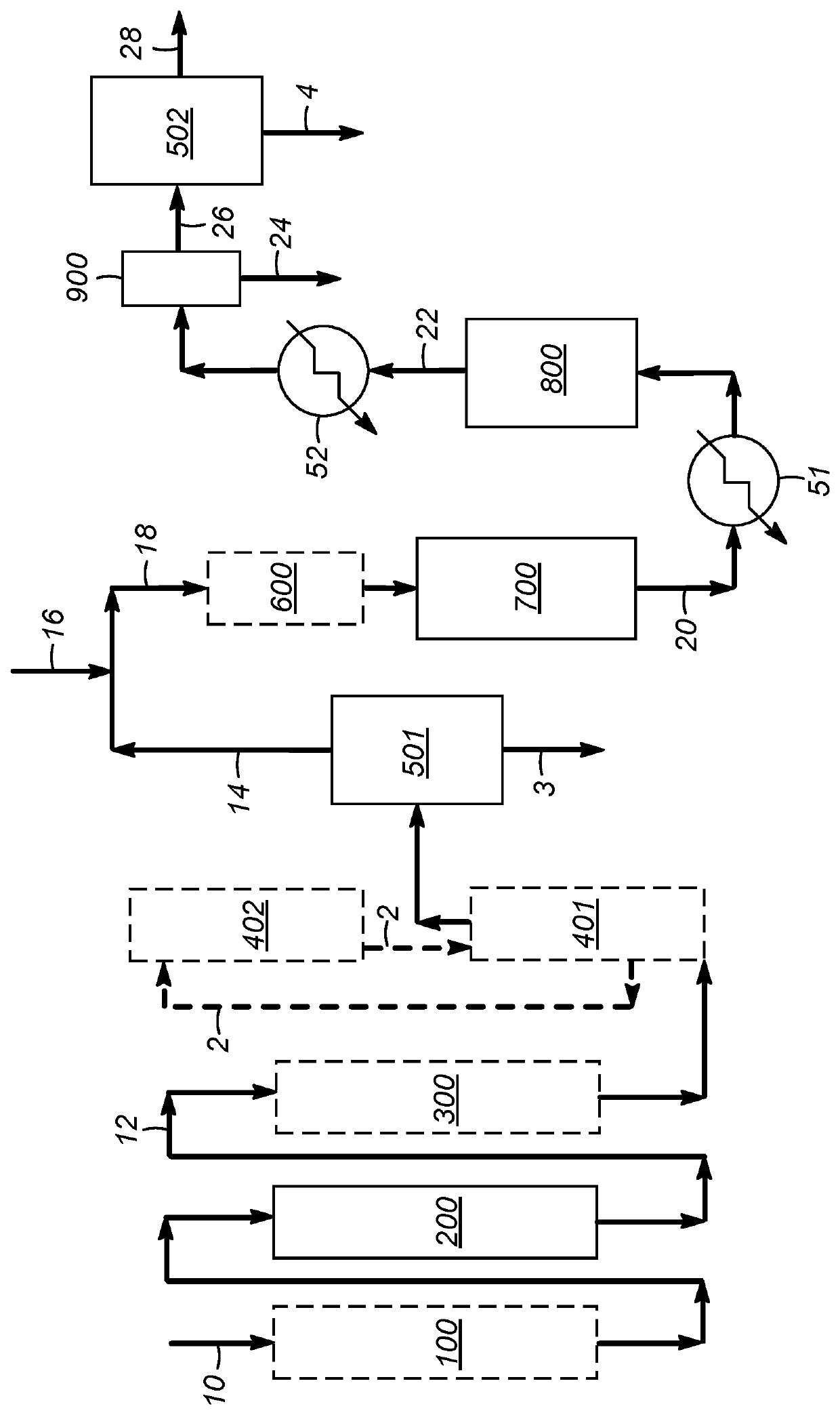Processes and catalysts for reforming of impure methane-containing feeds
a technology of catalysts and feeds, applied in the direction of hydrogen/synthetic gas production, chemistry apparatus and processes, inorganic chemistry, etc., can solve the problem of significant quantities of non-methane components, and achieve the effect of improving process economics, reducing the quantity of non-methane components, and reducing the quantity of methane components
- Summary
- Abstract
- Description
- Claims
- Application Information
AI Technical Summary
Benefits of technology
Problems solved by technology
Method used
Image
Examples
example 1
[0069]A pilot plant scale experiment was performed by continuously feeding a gas blend to a reforming reactor containing catalyst particles having a composition of 1 wt-% Pt and 1 wt-% Rh on a cerium oxide support. The performance of the system for steam reforming was tested at conditions of 0.89 hr−1 WHSV, 788° C. (1450° F.), and a gauge pressure of 110 kPa (16 psig). The gas blend in this example was designed to represent a combined feed comprising a hydropyrolysis gaseous mixture, obtained from biomass hydropyrolysis, and in particular obtained following two stages of hydropyrolysis and hydroconversion of biomass, followed by gas-liquid separation. This gaseous mixture was expected to contain methane, ethane, propane, and CO2, in addition to H2O. A combined feed of this gaseous mixture and a steam-containing feed would have the composition given in Table 1 below, indicated as “Renewable Type Feed.” The composition of the reformer product, following reforming of this feed under th...
example 2
[0071]A pilot plant scale experiment was performed as described in Example 1 and using the same type of reforming catalyst. In this case the performance of the system for steam reforming was tested at conditions of 0.89 hr−1 WHSV, 760° C. (1400° F.), and a gauge pressure of 172 kPa (1625 psig). The gas blend in this example, however, was designed to represent a combined feed comprising a refinery fuel gas mixture, including a high olefin (ethylene) concentration. A combined feed of the fuel gas mixture and a steam-containing feed would have the composition given in Table 2 below, indicated as “Refinery Fuel Gas Feed.” The composition of the reformer product, following reforming of this feed under the conditions described above, is also given in this table, together with the expected product following performing a water-gas shift (WGS) reaction on the reformer product, and thereafter condensing water from this product. As in Table 1, the molar steam / carbon ratio in Table 2 is based o...
PUM
| Property | Measurement | Unit |
|---|---|---|
| molar ratio | aaaaa | aaaaa |
| molar ratio | aaaaa | aaaaa |
| temperature | aaaaa | aaaaa |
Abstract
Description
Claims
Application Information
 Login to View More
Login to View More - R&D
- Intellectual Property
- Life Sciences
- Materials
- Tech Scout
- Unparalleled Data Quality
- Higher Quality Content
- 60% Fewer Hallucinations
Browse by: Latest US Patents, China's latest patents, Technical Efficacy Thesaurus, Application Domain, Technology Topic, Popular Technical Reports.
© 2025 PatSnap. All rights reserved.Legal|Privacy policy|Modern Slavery Act Transparency Statement|Sitemap|About US| Contact US: help@patsnap.com

